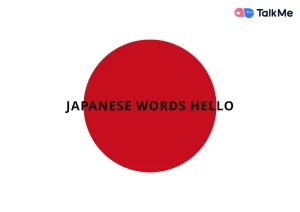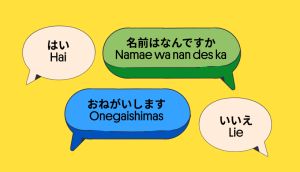Did you know that animals speak different “languages” depending on where you are in the world? The animal sounds list in Japanese offers a fascinating glimpse into how cultures hear and interpret the voices of nature.
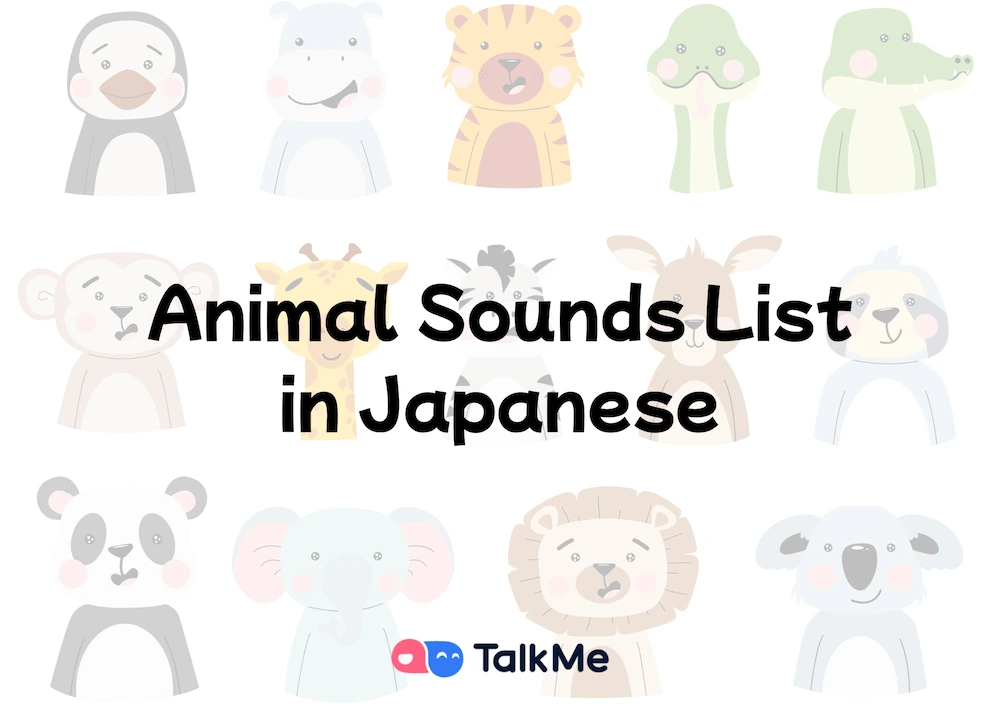
Far from just cute noises, these expressions reveal Japan’s deep connection with its environment and storytelling traditions. For language learners, especially those diving into Japanese, understanding these sounds isn’t just fun—it’s essential! Mastering Japanese animal sounds helps you grasp onomatopoeia, a core part of the language, and adds an entertaining twist to your vocabulary journey.
Why Learn Japanese Animal Sounds?
Japanische Wörter often use onomatopoeia to describe sounds, actions, feelings, and even moods. Unlike English, where such expressions are mostly limited to comic books or baby talk, in Japanese, they are a vital part of everyday conversation. This makes animal sounds in Japanese more than a linguistic oddity—they are culturally embedded elements that appear in children’s books, manga, anime, and even casual chats.
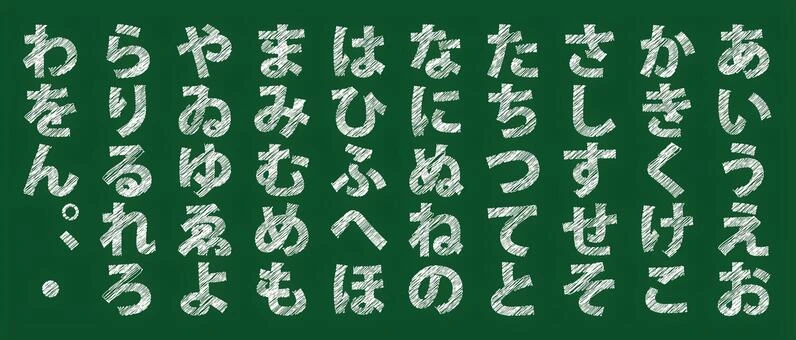
By learning these sounds, you gain insight into how Japanese people perceive the world around them. You’ll not only expand your vocabulary but also enrich your understanding of Japanese culture. Whether it’s a dog barking “わんわん” or a frog croaking “げろげろ,” these expressions give you a more colorful and relatable way to communicate.
Understanding Japanese Onomatopoeia
Japan is a treasure trove of onomatopoeic words, with a language system that categorizes them into types. For animal sounds, the most relevant are:
- Giseigo (擬声語) – Words that imitate actual sounds made by animals or people (e.g., barking, chirping).
- Gitaigo (擬態語) – Words that mimic states, feelings, or movements without actual sound (e.g., sneaking, shivering).
What’s unique is that Japanese animal sounds often reflect not just the noise but also the essence of the animal. A cat’s “にゃんにゃん” isn’t just “meow”—it conveys cuteness, mischief, and personality. This nuance helps paint richer pictures in both spoken and written communication.
From lullabies to poetry, these sounds bring nature to life in the Japanese language. Understanding and using them is like unlocking a new level of fluency and cultural appreciation.
Comprehensive Animal Sounds List
Here’s a detailed animal sounds list in Japanese to get you started:
🐱 Cat – にゃんにゃん (Nyan-nyan)
English equivalent: Meow
Playful and endearing, this sound is widely recognized—even internationally—thanks to Japan’s global pop culture.
🐶 Dog – わんわん (Wan-wan)
English equivalent: Woof or bark
Used often in children’s books and games, it can imply anything from excitement to a warning.
🐓 Rooster – こけここ (Kokekoko)
English equivalent: Cock-a-doodle-doo
A rhythmic wake-up call, this sound captures the spirit of Japan’s rural mornings.
🐘 Elephant – ぞうぞう (Zou-zou)
English equivalent: Trumpet sound
Not widely used but adds a fun touch in kids’ media to represent the elephant’s presence.
🐷 Pig – ぶーぶー (Bu-bu)
English equivalent: Oink oink
Cute and often humorous, this sound is also used metaphorically when someone is complaining.
🐄 Cow – もーもー (Moo-moo)
English equivalent: Moo
Same as in English, this is a calm, pastoral sound found in many Japanese picture books.
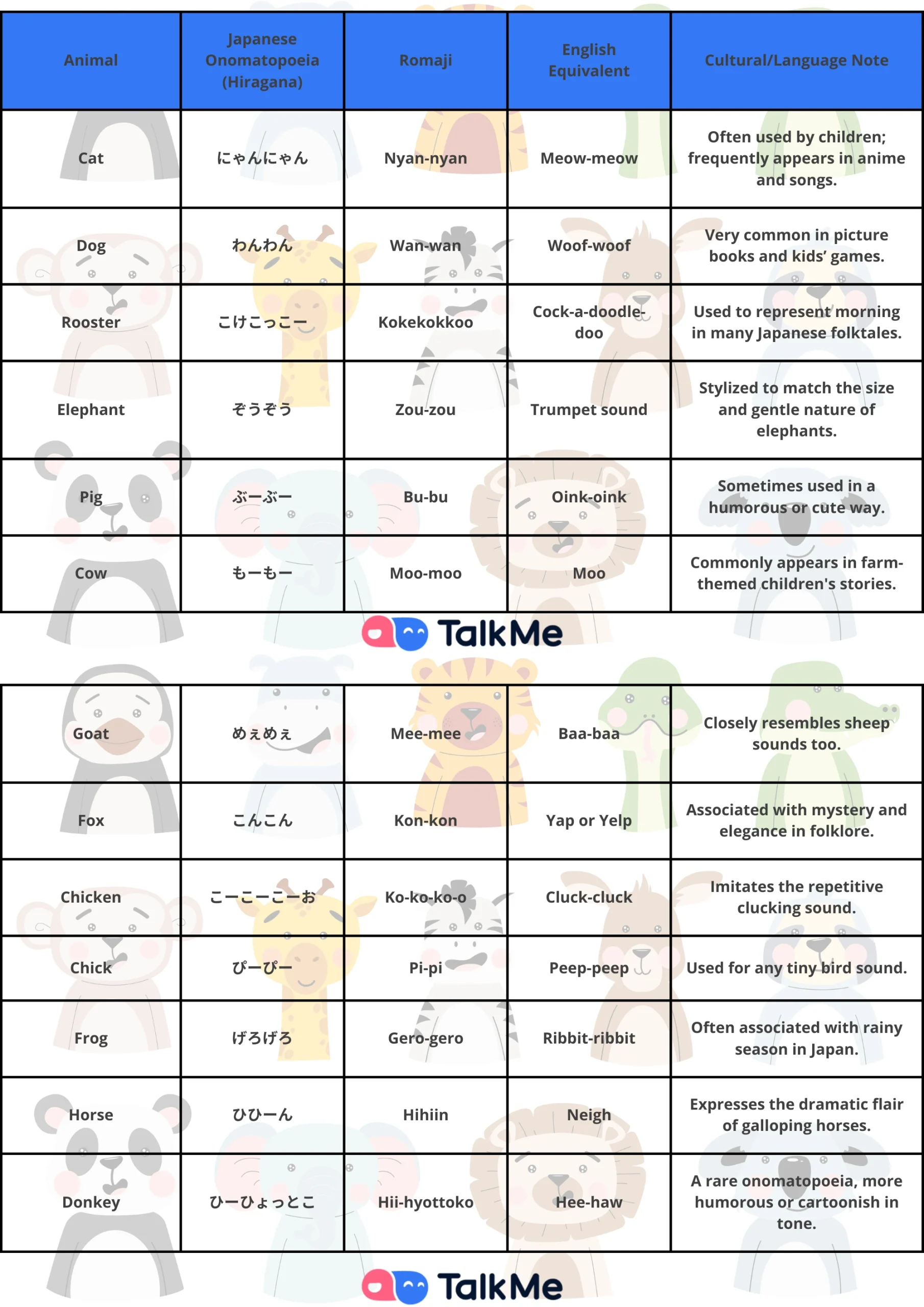
🐐 Goat – めぇめぇ (Mee-mee)
English equivalent: Baa
A bleating sound that’s less common but still known, especially in folk songs and nursery rhymes.
🦊 Fox – こんこん (Kon-kon)
English equivalent: Yip or yap
Often associated with Japanese folklore, particularly the mischievous kitsune (fox spirit).
🐔 Chicken – こーこーこーお (Ko-ko-ko-o)
English equivalent: Cluck or bawk
A sound of activity on the farm, often signaling morning or food-hunting.
🐣 Chick – ぴーぴー (Pi-pi)
English equivalent: Peep peep
Tiny and high-pitched, this sound captures the smallness and cuteness of baby chicks.
🐸 Frog – げろげろ (Gero-gero)
English equivalent: Ribbit
A classic Japanese sound associated with rainy days and countryside scenes.
🐴 Horse – ひーひーん (Hi-hi-in)
English equivalent: Neigh
Majestic and expressive, this sound often appears in historical dramas and anime.
🫏 Donkey – ひーひょっとこ (Hee-haw)
English equivalent: Hee-haw
A rare but comical addition to Japanese onomatopoeia, often used for laughs in cartoons.
FAQs About Animal Sounds in Japanese
Are Japanese animal sounds used in writing?
Yes! You’ll find them in books, manga, advertisements, and even official signage in zoos and farms.
Do all animals have specific onomatopoeic words?
Not all, but most common animals do. For less common ones, general sound patterns or creative expressions may be used.
Are these expressions changing over time?
Language evolves, and while traditional sounds remain popular, modern media can influence slight variations.
Can beginners understand these sounds easily?
Absolutely. They are often simple, repetitive, and widely used, making them beginner-friendly and fun to memorize.
Learn Japanese Onomatopoeia With TalkMe AI
If you’re serious about learning Japanese animal sounds and other onomatopoeic expressions, TalkMe AI is your best ally. It’s an innovative AI-powered language tutor designed to help non-native speakers become fluent through natural, interactive conversations.
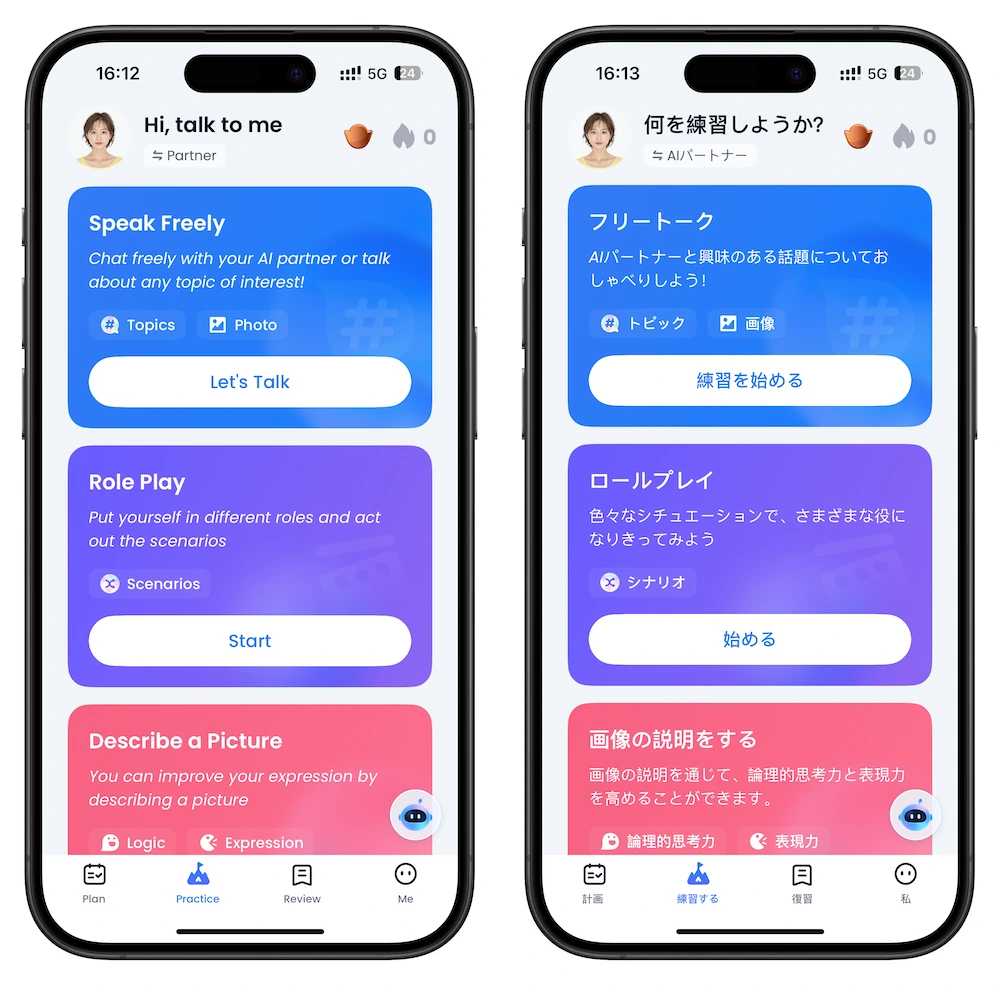
Mit TalkMe AI, you can:
- Practice animal sounds in daily dialogues.
- Engage in role-play scenarios with AI characters like farmers, anime mascots, or schoolchildren.
- Get Echtzeit-Feedback on your pronunciation and usage of onomatopoeia.
- Learn how sounds like “にゃんにゃん” or “げろげろ” fit naturally into real speech.
Unlike traditional apps, TalkMe AI goes beyond vocabulary drills. Its AI tutors respond like real native speakers, using contextual hints, tone, and cultural references. You’ll even find custom missions focused on mastering Japanese onomatopoeia through voice interaction, quizzes, and character-based chat stories.
Whether you’re mimicking a fox with “こんこん” or role-playing a rainy frog day with “げろげろ,” TalkMe AI ensures the experience is both educational and entertaining.
Bonus Tips for Practicing Animal Sounds in Japanese
Looking to reinforce your knowledge of Japanese animal sounds? Here are a few fun ideas:
- Watch Japanese children’s shows or anime – Shows like Anpanman oder Shima Shima Tora no Shimajirō feature tons of animal sounds.
- Use flashcards with pictures and audio – This helps connect the sound, the animal, and the Japanese word visually and aurally.
- Try voice recognition with TalkMe AI – Say each sound aloud and get instant feedback to perfect your pronunciation.
Final Verdict
Learning from the animal sounds list in Japanese is a delightful way to explore not only new vocabulary but also the heart of the language itself. These expressive, culturally rich sounds can help make your Japanese learning journey more immersive and fun.
Whether you’re studying for fun, travel, or fluency, don’t overlook the power of onomatopoeia. And if you want to make faster, more natural progress, give TalkMe AI a try—your ultimate tutor for mastering animal sounds in Japanese and much more.
Start chatting in Japanese like a native—animal sounds and all—with TalkMe AI today!

